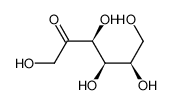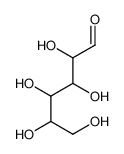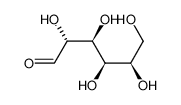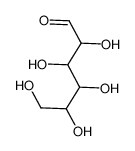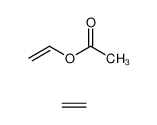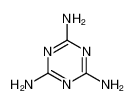| Product name | aldehydo-D-allose |
|---|
| Product number | - |
|---|---|
| Other names | D-Allose |
| Identified uses | For industry use only. Processing Aids and Additives |
|---|---|
| Uses advised against | no data available |
| Company | MOLBASE (Shanghai) Biotechnology Co., Ltd. |
|---|---|
| Address | Floor 4 & 5, Building 12, No. 1001 North Qinzhou Road, Xuhui District, Shanghai, China |
| Telephone | +86(21)64956998 |
| Fax | +86(21)54365166 |
| Emergency phone number | +86-400-6021-666 |
|---|---|
| Service hours | Monday to Friday, 9am-5pm (Standard time zone: UTC/GMT +8 hours). |
no data available
2.2 GHS label elements, including precautionary statements| Pictogram(s) | no data available |
|---|---|
| Signal word | no data available |
| Hazard statement(s) | no data available |
| Precautionary statement(s) | |
| Prevention | no data available |
| Response | no data available |
| Storage | no data available |
| Disposal | no data available |
no data available
3.Composition/information on ingredients 3.1 Substances| Chemical name | Common names and synonyms | CAS number | EC number | Concentration |
|---|---|---|---|---|
| aldehydo-D-allose | aldehydo-D-allose | 2595-97-3 | none | 100% |
Consult a physician. Show this safety data sheet to the doctor in attendance.
If inhaledFresh air, rest.
In case of skin contactWash off with soap and plenty of water. Consult a physician.
In case of eye contactFirst rinse with plenty of water for several minutes (remove contact lenses if easily possible), then refer for medical attention.
If swallowedRinse mouth.
4.2 Most important symptoms/effects, acute and delayedNo toxicity (USCG, 1999)
4.3 Indication of immediate medical attention and special treatment needed, if necessaryPancreatic beta cells are highly sensitive to oxidative stress, which might play an important role in beta cell death in diabetes. The protective effect of 6,6'-bieckol, a phlorotannin polyphenol compound purified from Ecklonia cava, against high glucose-induced glucotoxicity was investigated in rat insulinoma cells. High glucose (30 mM) treatment induced the death of rat insulinoma cells, but treatment with 10 or 50 ug/mL 6,6'-bieckol significantly inhibited the high glucose-induced glucotoxicity. Furthermore, treatment with 6,6'-bieckol dose-dependently reduced the level of thiobarbituric acid reactive substances, generation of intracellular reactive oxygen species, and the level of nitric oxide, all of which were increased by high glucose concentration. In addition, 6,6'-bieckol protected rat insulinoma cells from apoptosis under high-glucose conditions. These effects were associated with increased expression of the anti-apoptotic protein Bcl-2 and reduced expression of the pro-apoptotic protein Bax. These findings indicate that 6,6'-bieckol could be used as a potential nutraceutical agent offering protection against the glucotoxicity caused by hyperglycemia-induced oxidative stress associated with diabetes.
5.Fire-fighting measures 5.1 Extinguishing media Suitable extinguishing mediaSuitable extinguishing media: Use water spray, alcohol-resistant foam, dry chemical or carbon dioxide.
5.2 Specific hazards arising from the chemicalno data available
5.3 Special protective actions for fire-fightersWear self-contained breathing apparatus for firefighting if necessary.
6.Accidental release measures 6.1 Personal precautions, protective equipment and emergency proceduresUse personal protective equipment. Avoid dust formation. Avoid breathing vapours, mist or gas. Ensure adequate ventilation. Evacuate personnel to safe areas. Avoid breathing dust. For personal protection see section 8.
6.2 Environmental precautionsSweep spilled substance into covered containers. Wash away remainder with plenty of water.
6.3 Methods and materials for containment and cleaning upACCIDENTAL RELEASE MEASURES: Personal precautions, protective equipment and emergency procedures: Avoid dust formation. Avoid breathing vapors, mist or gas; Environmental precautions: No special environmental precautions required; Methods and materials for containment and cleaning up: Sweep up and shovel. Keep in suitable, closed containers for disposal.
7.Handling and storage 7.1 Precautions for safe handlingAvoid contact with skin and eyes. Avoid formation of dust and aerosols. Avoid exposure - obtain special instructions before use.Provide appropriate exhaust ventilation at places where dust is formed. For precautions see section 2.2.
7.2 Conditions for safe storage, including any incompatibilitiesSeparated from strong oxidants. Well closed.Keep container tightly closed in a dry and well-ventilated place. Hygroscopic. Keep in a dry place.
8.Exposure controls/personal protection 8.1 Control parameters Occupational Exposure limit valuesno data available
Biological limit valuesno data available
8.2 Appropriate engineering controlsHandle in accordance with good industrial hygiene and safety practice. Wash hands before breaks and at the end of workday.
8.3 Individual protection measures, such as personal protective equipment (PPE) Eye/face protectionSafety glasses with side-shields conforming to EN166. Use equipment for eye protection tested and approved under appropriate government standards such as NIOSH (US) or EN 166(EU).
Skin protectionWear impervious clothing. The type of protective equipment must be selected according to the concentration and amount of the dangerous substance at the specific workplace. Handle with gloves. Gloves must be inspected prior to use. Use proper glove removal technique(without touching glove's outer surface) to avoid skin contact with this product. Dispose of contaminated gloves after use in accordance with applicable laws and good laboratory practices. Wash and dry hands. The selected protective gloves have to satisfy the specifications of EU Directive 89/686/EEC and the standard EN 374 derived from it.
Respiratory protectionWear dust mask when handling large quantities.
Thermal hazardsno data available
9.Physical and chemical properties| Physical state | WHITE POWDER |
|---|---|
| Colour | Colorless crystals or white granular powder |
| Odour | Odorless |
| Melting point/ freezing point | 268°C(lit.) |
| Boiling point or initial boiling point and boiling range | 87°C/0.1mmHg(lit.) |
| Flammability | Combustible. |
| Lower and upper explosion limit / flammability limit | no data available |
| Flash point | 65°C(lit.) |
| Auto-ignition temperature | Not flammable (USCG, 1999) |
| Decomposition temperature | no data available |
| pH | pH of 0.5 molar aqueous solution = 5.9 /alpha-glucose/ |
| Kinematic viscosity | no data available |
| Solubility | no data available |
| Partition coefficient n-octanol/water (log value) | no data available |
| Vapour pressure | 1.83E-08mmHg at 25°C |
| Density and/or relative density | 1.732 g/cm3 |
| Relative vapour density | no data available |
| Particle characteristics | no data available |
no data available
10.2 Chemical stabilityStable under recommended storage conditions.
10.3 Possibility of hazardous reactionsDust explosion possible if in powder or granular form, mixed with air.A weak reducing agent.
10.4 Conditions to avoidno data available
10.5 Incompatible materialsIncompatible materials: Strong oxidizing agents
10.6 Hazardous decomposition productsWhen heated to decomposition it emits acrid smoke and irritating fumes.
11.Toxicological information Acute toxicity- Oral: LD50 Rat oral 25,800 mg/kg
- Inhalation: no data available
- Dermal: no data available
no data available
Serious eye damage/irritationno data available
Respiratory or skin sensitizationno data available
Germ cell mutagenicityno data available
Carcinogenicityno data available
Reproductive toxicityno data available
STOT-single exposureno data available
STOT-repeated exposureno data available
Aspiration hazardno data available
12.Ecological information 12.1 Toxicity- Toxicity to fish: no data available
- Toxicity to daphnia and other aquatic invertebrates: no data available
- Toxicity to algae: no data available
- Toxicity to microorganisms: no data available
AEROBIC: D(+)-Glucose, present at 1000 mg/L, reached >90% of its theoretical BOD in 2 days using a non-adapted activated sludge inoculum at 1 g/L (dry matter) in a Zahn-Wellens static test(1). The biodegradation half-life of D(+)-glucose in aerobic aquifer material (not heavily polluted), including Ontario loam and sand, South Carolina sand and Holland sand, is reported to range from 0.6-1.1 days(2). Using an electrolytic respirometry method with a 100 mg/L compound concentration and an activated sludge inoculum, D(+)-glucose was easily biodegraded with a 46-56% theoretical BOD in 100-110 hours(3). Using standard and seawater dilution methods, the 5-day BOD of D(+)-glucose was determined as 74.8 and 75.2% respectively(4). D(+)-Glucose was readily biodegradable in batch tests using adapted activated sludge with a biodegradation rate of 180.0 mg COD/g-hour(5). Biodegradation of D(+)-glucose in various samples of aquifer, saturated zone, and surface soils was found to occur rapidly with somewhat slower rates in till soil samples(6); based on measured rate constants(6), the biodegradation half-life ranged from 0.25 to 19 days.
12.3 Bioaccumulative potentialAn estimated BCF of 3 was calculated in fish for D(+)-glucose(SRC), using a log Kow of -3.00(1) and a regression-derived equation(2). According to a classification scheme(3), this BCF suggests the potential for bioconcentration in aquatic organisms is low(SRC).
12.4 Mobility in soilUsing a structure estimation method based on molecular connectivity indices(1), the Koc of D(+)-glucose can be estimated to be 10(SRC). According to a classification scheme(2), this estimated Koc value suggests that D(+)-glucose is expected to have very high mobility in soil.
12.5 Other adverse effectsno data available
13.Disposal considerations 13.1 Disposal methods ProductThe material can be disposed of by removal to a licensed chemical destruction plant or by controlled incineration with flue gas scrubbing. Do not contaminate water, foodstuffs, feed or seed by storage or disposal. Do not discharge to sewer systems.
Contaminated packagingContainers can be triply rinsed (or equivalent) and offered for recycling or reconditioning. Alternatively, the packaging can be punctured to make it unusable for other purposes and then be disposed of in a sanitary landfill. Controlled incineration with flue gas scrubbing is possible for combustible packaging materials.
14.Transport information 14.1 UN Number| ADR/RID: UN3439 | IMDG: UN3439 | IATA: UN3439 |
| ADR/RID: NITRILES, SOLID, TOXIC, N.O.S. |
| IMDG: NITRILES, SOLID, TOXIC, N.O.S. |
| IATA: NITRILES, SOLID, TOXIC, N.O.S. |
| ADR/RID: 6.1 | IMDG: 6.1 | IATA: 6.1 |
| ADR/RID: III | IMDG: III | IATA: III |
| ADR/RID: no | IMDG: no | IATA: no |
no data available
14.7 Transport in bulk according to Annex II of MARPOL 73/78 and the IBC Codeno data available
15.Regulatory information 15.1 Safety, health and environmental regulations specific for the product in question| Chemical name | Common names and synonyms | CAS number | EC number |
|---|---|---|---|
| aldehydo-D-allose | aldehydo-D-allose | 2595-97-3 | none |
| European Inventory of Existing Commercial Chemical Substances (EINECS) | Listed. | ||
| EC Inventory | Listed. | ||
| United States Toxic Substances Control Act (TSCA) Inventory | Not Listed. | ||
| China Catalog of Hazardous chemicals 2015 | Not Listed. | ||
| New Zealand Inventory of Chemicals (NZIoC) | Listed. | ||
| Philippines Inventory of Chemicals and Chemical Substances (PICCS) | Not Listed. | ||
| Vietnam National Chemical Inventory | Not Listed. | ||
| Chinese Chemical Inventory of Existing Chemical Substances (China IECSC) | Not Listed. | ||
| Creation Date | Aug 11, 2017 |
|---|---|
| Revision Date | Aug 11, 2017 |
- CAS: Chemical Abstracts Service
- ADR: European Agreement concerning the International Carriage of Dangerous Goods by Road
- RID: Regulation concerning the International Carriage of Dangerous Goods by Rail
- IMDG: International Maritime Dangerous Goods
- IATA: International Air Transportation Association
- TWA: Time Weighted Average
- STEL: Short term exposure limit
- LC50: Lethal Concentration 50%
- LD50: Lethal Dose 50%
- EC50: Effective Concentration 50%
- IPCS - The International Chemical Safety Cards (ICSC), website: http://www.ilo.org/dyn/icsc/showcard.home
- HSDB - Hazardous Substances Data Bank, website: https://toxnet.nlm.nih.gov/newtoxnet/hsdb.htm
- IARC - International Agency for Research on Cancer, website: http://www.iarc.fr/
- eChemPortal - The Global Portal to Information on Chemical Substances by OECD, website: http://www.echemportal.org/echemportal/index?pageID=0&request_locale=en
- CAMEO Chemicals, website: http://cameochemicals.noaa.gov/search/simple
- ChemIDplus, website: http://chem.sis.nlm.nih.gov/chemidplus/chemidlite.jsp
- ERG - Emergency Response Guidebook by U.S. Department of Transportation, website: http://www.phmsa.dot.gov/hazmat/library/erg
- Germany GESTIS-database on hazard substance, website: http://www.dguv.de/ifa/gestis/gestis-stoffdatenbank/index-2.jsp
- ECHA - European Chemicals Agency, website: https://echa.europa.eu/






